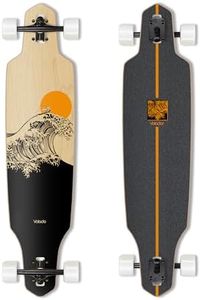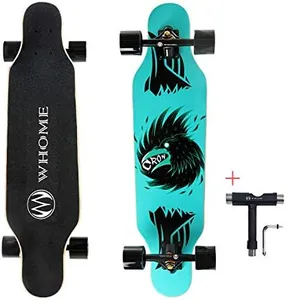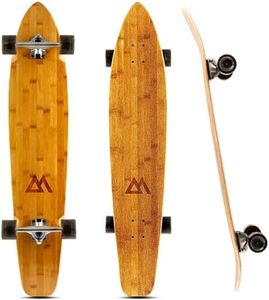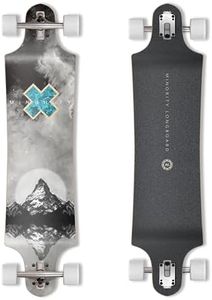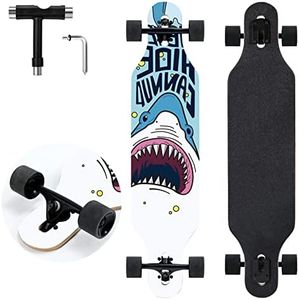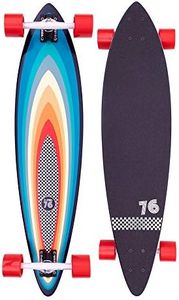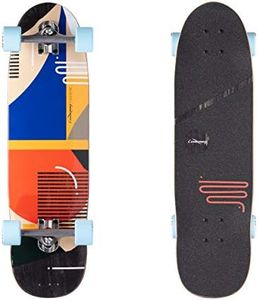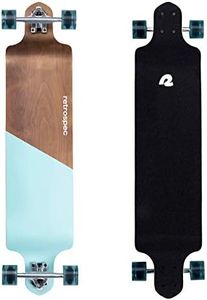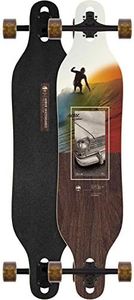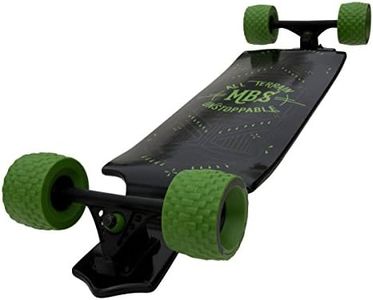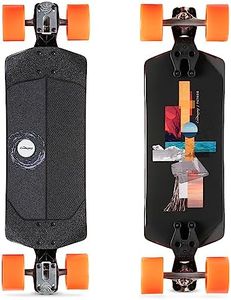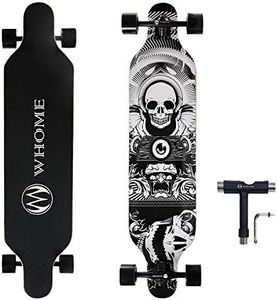We Use CookiesWe use cookies to enhance the security, performance,
functionality and for analytical and promotional activities. By continuing to browse this site you
are agreeing to our privacy policy
10 Best Long Boards
From leading brands and best sellers available on the web.Buying Guide for the Best Long Boards
Choosing the right longboard can be the difference between a fun, smooth ride and a frustrating experience. Before starting your search, think about how you plan to use your longboard—whether it's for cruising around town, downhill racing, commuting, or performing tricks. Understanding your intended use will help you focus on the most relevant features. Besides usage, also consider factors like your weight, height, and experience level to make sure the board feels stable and comfortable. Take your time to learn about the main specifications so you can make a well-informed decision that matches your personal riding style and preferences.Deck ShapeThe deck shape refers to the outline of the board, and it's one of the first things to consider because it influences how the board handles. Common shapes include pintail, drop-through, and cruiser. Pintail shapes are great for classic, easy cruising and prevent wheel bite, making them ideal for beginners or relaxed rides. Drop-through decks put you closer to the ground, offering more stability for downhill or long-distance commuting. Cruiser shapes are versatile and often have kicktails, making tight turns or tricks possible. Think about what kind of riding you want to do, and let that guide your choice—the more stable and flat the board, the better for beginners and calm rides; if you want agility or to try tricks, a deck with curves or kicktails might be better.
Deck LengthDeck length is the measurement from the nose to the tail of the board and affects both stability and maneuverability. Longboards can range from about 33 inches up to 60 inches or more. Shorter decks (33-38 inches) are easier to turn and carry, making them good for city cruising or tricks. Medium-length decks (38-42 inches) offer a nice balance of stability and maneuverability, while longer decks (over 42 inches) are very stable—perfect for downhill riding or beginners who want a relaxed cruise. Choose longer decks for smooth, stable rides and shorter ones if you want sharper turns or a lighter board to carry.
Deck FlexDeck flex is how much the board bends under your weight, which changes the feel of your ride. More flexible decks absorb bumps well and offer a comfy, bouncy ride, making them pleasant for casual cruising. On the other hand, stiff decks give more control and stability at higher speeds, which is important for downhill or racing. If you are a beginner or lighter rider looking for a forgiving, cushioned ride, opt for medium or flexible decks. Heavy riders or those wanting to ride fast should choose stiffer decks for better performance and safety.
Wheel SizeWheel size, usually measured in millimeters, determines how smoothly and quickly the longboard rolls. Larger wheels (typically 70mm and up) roll faster and tackle cracks and pebbles better, which is ideal for cruising and downhill. Smaller wheels accelerate more easily and are lighter, suited for tricks or technical riding where quick changes of direction matter. Go for larger wheels if you want to glide over rough surfaces and have a stable ride, or choose smaller ones for agility and quick movements.
Wheel DurometerWheel durometer measures how hard or soft the wheels are, on a scale where lower numbers mean softer wheels. Soft wheels (around 75A-80A) provide more grip and a smoother ride over rough pavements, great for city cruising or downhill. Harder wheels (above 85A) slide more easily, which is better for doing tricks or riding on very smooth surfaces. For general city or beginner use, stick to softer wheels, but if you want to practice sliding or do tricks, try harder wheels.
Truck TypeTrucks are the metal parts underneath the board that hold the wheels and allow turning. The main types are standard kingpin trucks and reverse kingpin trucks. Reverse kingpin trucks are more stable and turn more smoothly, making them popular for longboards and general cruising. Standard kingpin trucks are common on trick boards, offering less stability but tighter turns. Consider reverse kingpin trucks for most longboard uses, especially if you’re just starting out or planning long cruises.
